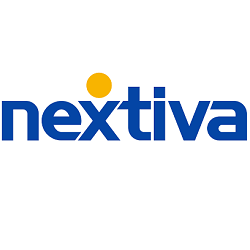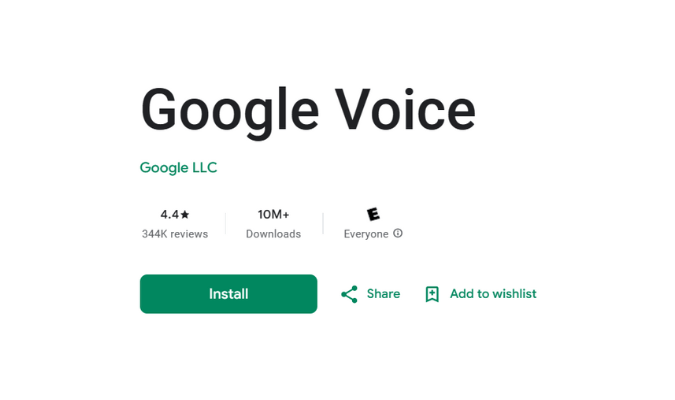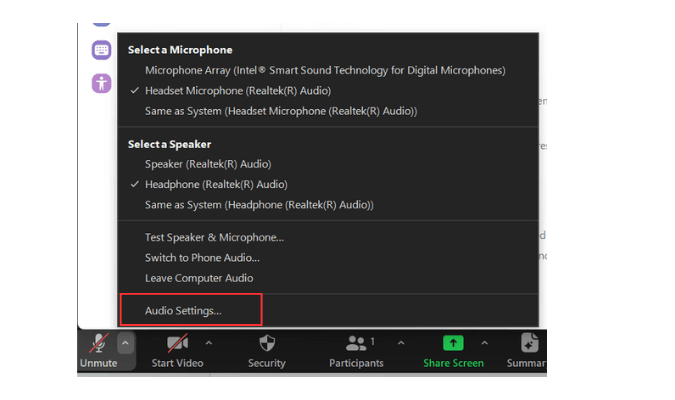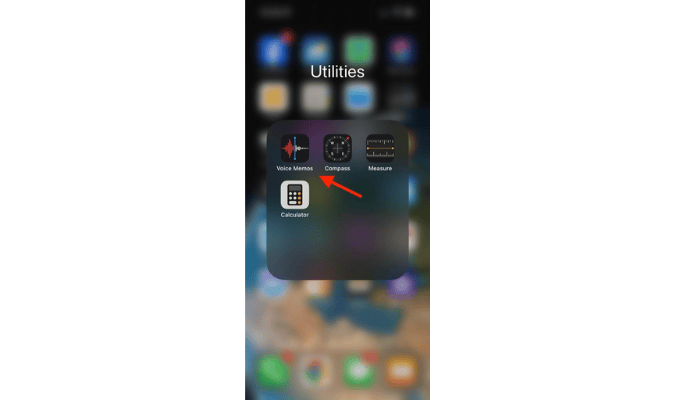There’s (almost) nothing worse than building up to a sale over the course of an hour and spending the last twenty minutes playing the “can you hear me now” game rather than closing the deal. Or worse—misunderstanding whatever it is that your boss is trying to tell you. With VoIP speed testing, you can ensure your new VoIP system is operating at peak performance. In this guide, we cover everything you need to know to run a speed test and troubleshoot potential VoIP issues before they result in lost customers or unnecessary frustration.
Nextiva
Best VoIP Phone Service
Get everything you need from your VoIP provider including unlimited voice and video calls, a free phone number, a mobile app, and unlimited online faxing. Or upgrade for advanced UCaaS features like video conferencing and numerous collaboration tools.
Why VoIP Speed Testing Is So Important
VoIP speed testing is the best way to avoid poor call quality—plain and simple.
It’s a crucial piece of implementing a new VoIP system as well as maintaining the one you’ve had for years. Low-quality calls can cause lost customers, increased customer churn, ruin sales calls, and even hurt your company’s culture if your team can’t communicate with each other.
Without a speed test that offers valuable insight into the performance of your VoIP systems, you won’t know what the person on the other end hears. If you’re anything like us, you don’t like leaving things like that up to chance.
VoIP exchanges call information between you and your customers through data packets. With bad VoIP call quality, those data packets end up sounding faulty, come through incomplete, or get dropped altogether.
However, A quick VoIP speed test can help you detect if any of these issues are happening.
Goldberg Hedge Funds is a great example of this. After onboarding Nextiva as its new VoIP system, the company was able to get access to client calls faster and service them more quickly through a seamless CRM integration with a reliable VoIP provider.
Quick Tips to Improve VoIP Speed Today
Let’s hit the rewind button for a bit. Before you even think about running a VoIP speed test, well, you need to make sure you’re using a reliable VoIP solution to begin with.
Nextiva, a clear winner in our top list of VoIP software, can be a great place to start if you aren’t already using them as your VoIP provider.

Nextiva offers a single platform where you can easily integrate the business applications you’re already using into its calling system. It’s a scalable option for SMBs and enterprise businesses alike as it enables you to easily add features, lines, and integrations as you grow.
It doesn’t stop there. Nextiva focuses on offering a reliable network with plenty of built-in security features. So you can be sure you’re meeting best practice standards and compliance requirements.
One of the biggest challenges people face when transferring to a VoIP calling system is the potential hazards of using a phone line without an address attached to it. With Nextiva, you get a built-in E911 solution. So in case you need to get in contact with emergency services, they can quickly and safely get a hold of your location.
I’d say customer service and onboarding are standout areas where Nextiva shines. When you adopt new software, there’s bound to be a learning curve for your team to get through in the beginning. Nextiva offers plenty of video guides, tutorials, and phone guides so you aren’t left to your own devices when implementing a new system.
I could go on. But get this. One of the best parts about using Nextiva as your VoIP solution? It already comes with a built-in VoIP speed test. No third parties necessary and it’ll be one less thing to worry about when you sign up with them.
To get started with Nextiva, you can sign up here and pick a plan according to your business needs.
Now, here are a few things you can do to improve your VoIP speed and quality.
Switch to a reliable VoIP provider
Nextiva
Best VoIP Phone Service
Get everything you need from your VoIP provider including unlimited voice and video calls, a free phone number, a mobile app, and unlimited online faxing. Or upgrade for advanced UCaaS features like video conferencing and numerous collaboration tools.
I know you’ve just read a good bit about Nextiva as a great option. But you definitely don’t have to go with them as your provider if you don’t consider them a good fit.
To help with this, we’ve already done the hard work for you. After combing through tons of software options, we’ve come up with a list of the best VoIP providers on the market. Check out our in-depth guide to the best options for your type of business here.
Eliminate Jitter
While the word jitter might sound funny, it can be a real issue when you’re dealing with VoIP software. And fixing it can be one of the fastest routes to better call quality.
Now, what exactly do I mean when I say jitter? When you’re making voice calls over the internet, the call is broken down into sound packets for easier communication transmission. Jitter is what happens when those packets aren’t delivered smoothly, hence the dropped calls, choppy audio, or audible static.
The less jitter, the smoother your calls. For there to be less jitter within your voice calls, you can:
- Run a bandwidth test
- Check your hardware connections and use an ethernet cable
- Check in with your VoIP for additional support
Your calls might be getting hit with jitter because your bandwidth is overwhelmed with too much activity. As a general rule of thumb, you want to account for at least 100 kbps upload and download bandwidth for each line. Don’t forget to also account for the rest of the online activity your business will be doing besides making and receiving calls.
Running a bandwidth test with a tool like Get VoIP, you can quickly see the quality and performance of your connection. You’ll also be able to find out your upload and download times to see if they’re up to par.
It can also be good practice to directly connect your calling hardware to your network with an ethernet cable. That way you have a direct connection to your internet line and you lessen the chances of ongoing bad call quality issues.
If all else fails and you’ve exhausted all your DIY options, the next best thing to do is to get in touch with your VoIP provider’s customer support team.
Nextiva provides a support ticket feature for email support, a chat support option, or a customer support number you can call during business hours. To add, they also have plenty of easy-to-follow online troubleshooting guides you can access instantly.
Use free speed testing tools
There are plenty of free VoIP speed testing tools out there that can help you run a reliable speed test.
Some great options include:
For instance, with Nextiva’s speed test, it’s as easy as inputting the location for your concurrent calls starting point and choosing the number of VoIP lines to simulate. Once your browser prompts you to enable the testing services, you can run it and take a look at your results.

Don’t worry about getting hit with a list of results you can’t understand without an IT support team. Nextiva ensures its speed test gives you results that are concise and easy to understand.
Check for malicious attacks
With the power and security features that most reputable VoIP providers have built-in to their software today, malicious attacks are less likely to be a real issue. This doesn’t completely eliminate them as a possible cause for slower VoIP calling speeds, so it doesn’t hurt to check for them.
Virtually any activity done through an internet connection can be subject to some sort of malicious attack. Malware, spyware, or phishing attacks are only some of the issues that can affect the quality of your VoIP calls. To help with this, there is plenty of free software online that can help you determine if this is affecting your VoIP call performance. To add, you can also set the Qos on your router to prioritize voice applications to increase call performance.
Get in touch with your ISP
You might be in a situation where you don’t really know how much bandwidth to account for. Here’s where it’s best to get in touch with your internet service provider, or ISP, to get more familiar with what your specs are as far as service goes.
If you’re in a position where you aren’t getting the bandwidth necessary, now is the time to configure that with your provider. No other VoIP tests, hacks, or shortcuts are going to amount to much if you don’t have a strong internet connection you can rely on in the first place.
To ensure you’re getting the right amount of bandwidth, check in with your VoIP provider first, and see what they recommend, as not all of them are built equally.
Long-Term Strategies for VoIP Speed Testing
Around here, we like to say that once you go VoIP you never go back. This means you’ll need long-term strategies for dealing with any issues that might arise with your VoIP service, regardless of who you choose as your provider.
Here are some long-term pointers that, in our experience, have helped businesses bring poor call quality to a minimum.
Establish quality assurance checkpoints
One of the easiest ways to ensure your VoIP setup stays in good standing is to establish a simple quality assurance checkpoint you revisit every few months (or even more frequently). You can easily create a checklist of things to check for— like the need for additional bandwidth usage, the state of your hardware, and a survey of the quality of your calls amongst your team.
Creating a checkpoint where you cover your corners and check through your VoIP network can ensure you don’t run into unforeseen VoIP problems in the future. It also empowers you to be proactive about any necessary changes or additions that your VoIP system might need.
Find a reliable testing procedure
We’ve provided a list of some of our favorite VoIP testing tools in this guide. Though you don’t have to use them, they’re a great place to start if you don’t have a dedicated IT team that can take this process off your plate.
It’s also a good idea to check in with your current VoIP provider to see if they offer any reliable testing services you can use at your leisure. As mentioned before, Nextiva not only offers stellar customer support if something were to go wrong with your VoIP setup, but they also offer testing tools you can easily access. RingCentral, another VoIP favorite of ours, does a good job at this as well.
Segment VoIP phones on your network
A great way to ensure your VoIP setup passes the speed test is to segment the VoIP phone lines on your network.
In short, VLAN segmentation helps ensure the quality of your calls. If your router supports VLANs, or Virtual Local Area Networks, you can segment your network with different subnets.
Using a VLAN along with your VoIP keeps your devices from competing for space on your network. This, in turn, helps to ensure your data packets are delivered smoothly.
Ensure your VoIP infrastructure is compatible
It never hurts to make sure your VoIP infrastructure is thoroughly compatible with your VoIP system. This means checking firewall settings and routers to ensure they play nice with the VoIP of your choice.
Sometimes it can be easy to overlook the fundamental cornerstones of what a VoIP setup needs to work as seamlessly as possible. This might mean you’ll have to rework some wiring, configure your settings to ensure they’re up to date, or double-check that your hardware is compatible with your current VoIP provider.
VoIP testing is a great way to stay on top of the quality of your calling system. There are definitely plenty of short-term and long-term checkups you can walk through for the best results.
Nextiva
Best VoIP Phone Service
Get everything you need from your VoIP provider including unlimited voice and video calls, a free phone number, a mobile app, and unlimited online faxing. Or upgrade for advanced UCaaS features like video conferencing and numerous collaboration tools.





